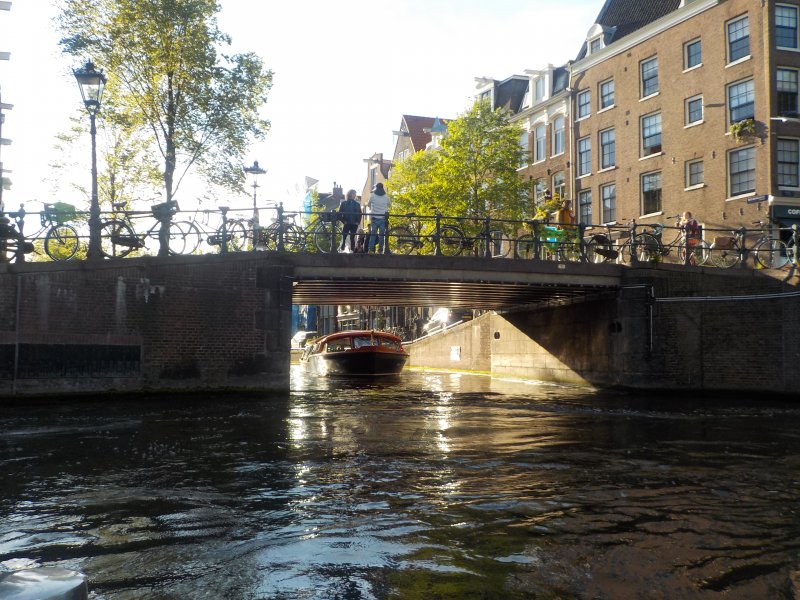
As a travel writer focused on sharing articles around locations of natural beauty, you probably wouldn’t expect to read anything from me about something located within a major European city.
Nevertheless, the waters making up the canals of Amsterdam are impressive and worth seeing when you are in the area.
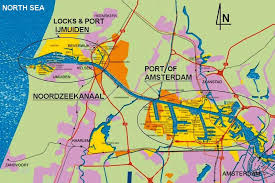
Making up a combined system of over 160 canals, we are talking about waterways crisscrossing this city and together are over 100 kilometers (62 miles) in length. Although often referred to as ‘The Venice of the North’, Amsterdam actually has more canals than Venice!
The Amsterdam canals area also includes about 90 islands and 1,500 bridges! That is more than any other city worldwide and 3 times the number of bridges found in Venice. The three canals of Herengracht, Prinsengracht, and Keizersgracht, were dug in the 17th century during the Dutch Golden Age and form concentric belts around the city, known as the Grachtengordel.
These canals contain both salt water and fresh water. The saltwater enters the cities canals via the Noordzeekanaal, which connects Amsterdam with the harbor at Ijmuiden which then leads out to the North Sea. The freshwater flows from the famous river Rhine, via the Amsterdam-Rhine Canal.
The Netherlands and water
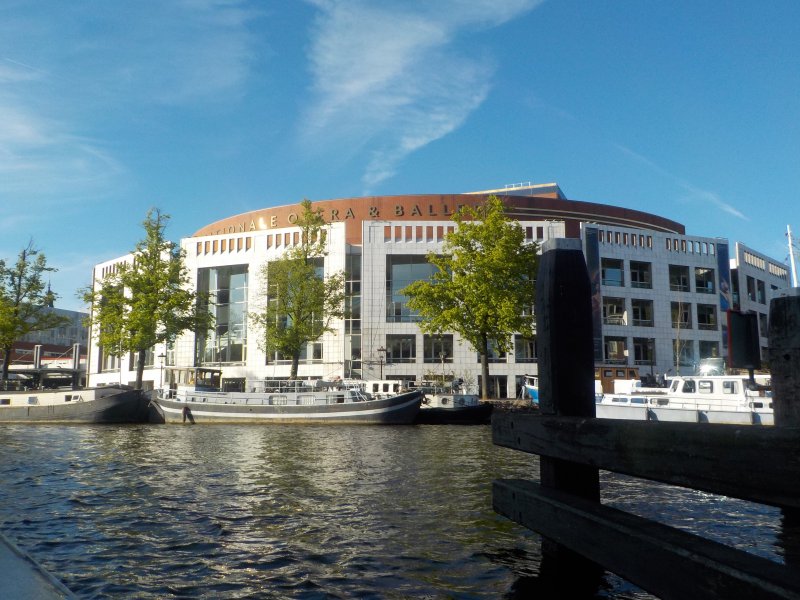
This is a country with a significant relationship with water. Aside from the Atlantic Coast along the western side of the Netherlands, this is a nation renowned for its waterways, canals, lakes, and rivers along which you will find their famous windmills, pumping stations, polders, and dikes.
It is significant to note that almost a third of the country lies below sea level. Therefore, if the Netherlands did not effectively manage the water around it, around half of Holland would actually be submerged! As you can appreciate, the Dutch are masters of engineering and water management culminating in their Delta Works that protect their lands.
The Delta Works is a series of impressive constructions of dams, sluices, and storm surge barriers whose aim was to shorten the Dutch coastline, and thus reducing the number of dikes that had to be raised. Along with the Zuiderzee Works, the Delta Works have been declared one of the Seven Wonders of the Modern World by the American Society of Civil Engineers.
The Netherlands has also been regarded as a great seafaring nation for a few centuries now, with Dutch sailors and explorers making it to most parts of the globe. Given all of this, I think it is fair to say that this is a country that knows a thing or two about water.
History of the canals
The city of Amsterdam itself was founded around 1250 with the building of the Dam that gave it its name ‘Aeme Stelle Redamme’ is Medieval Dutch for: ‘Dam in a Watery Area’.
The first canals were dug for water management and defense. As the city expanded in the Middle Ages, successive defense moats ended up inside the walls and lost their function. But they acquired an important new one: local transport of merchandise.
The lost canals
The 20th century needed space for cars and other land traffic. Many canals were filled in to make streets and parking spaces. Indeed, almost half of the original water in Amsterdam was lost to landfills, but a full 25 percent of the city’s surface still consists of navigable waterways. With 65 miles of ancient canals, Amsterdam is still regarded as the ‘most watery city’ in the world.
Ways to cruise the Amsterdam canals
Aside from admiring the canals from the various streets and bridges, there are two main ways visitors to Amsterdam can experience the canals.
The first and most popular is by taking a canal cruise that takes you through a network of connecting canals and passing a number of well-known sites and locations. There are plenty of tour options in this regard and all of them appear to be reputable and professional. In all, there are some 200 canal cruise boats carrying an average of 3 million passengers each year (pre-COVID 19 statistics).
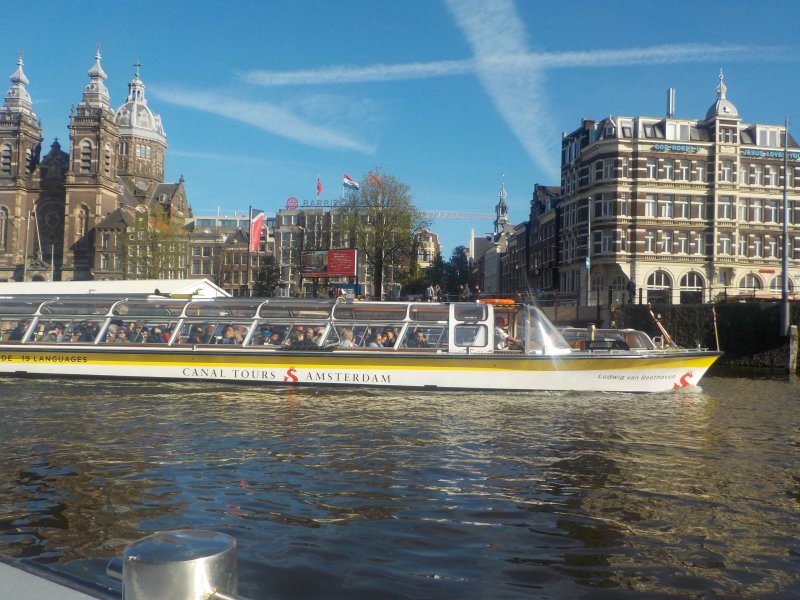
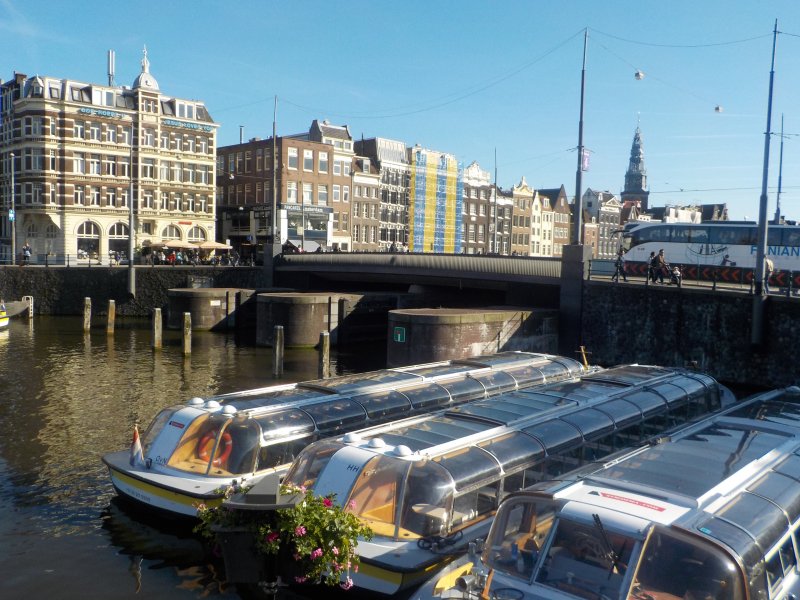
The second and perhaps more adventurous way to experience the canals is to create your own journey by hiring your own boat (with or without a captain) or by renting a paddleboat and going at your own pace. You just will need to make sure you stay out of the way of the larger, faster vessels that plow these waters!
The main canals in Amsterdam
The main canals all connect to a larger harbor area (via the Noordzeekanaal), which in turn lead out to the North Sea. Numerous ferries connect the people of Amsterdam between both sides of the Noordzeekanaal. Most of these ferries are the property of the city and provide a free non-stop service all day long for all pedestrians and cyclists. It’s a very efficient and effective operation and you never have to wait very long at all to board the next ferry to take you across the water.
The Dutch word for canal is ‘gracht’ and the main canals form a semicircular ring within the city, known as ‘grachtengordel’ (canal ring), with both ends of each main canal essentially meeting back up with the Noordzeekanaal.
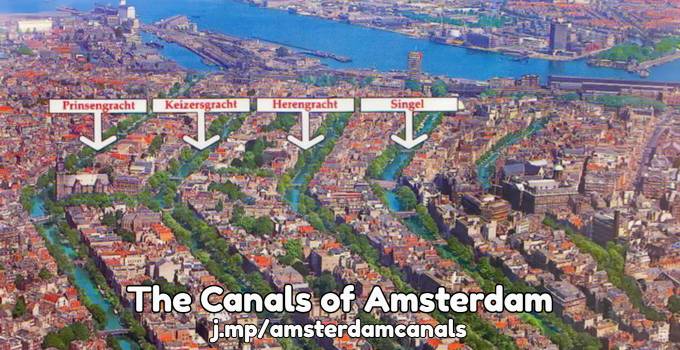
Once you are on the south side of the Noordzeekanaal, you are on the side where the main canals of the city are located. These canals are:
Herengracht (Gentlemen’s Canal)
Herengracht or The Gentlemen’s canal is considered to be the most important canal in Amsterdam. In the 17th century, the richest merchants, the mayors and the most influential regents of the city resided on this canal. It was also the head office of the Dutch West India Company. Living at an address on the Gentlemen’s canal is considered to be prestigious even to this day. Here you will also find the official residence of the mayor of Amsterdam at house number 502.
Keizersgracht (Emperor’s canal)
Keizersgracht or The Emperor’s canal is the middle one of the three main canals of the city. It was named after emperor Maximillian of Austria. The canal is 31 meters wide, which makes it the widest canal in the city center. Digging this canal started in the year 1612, simultaneously with the Gentlemen’s canal and Prince’s canal. Originally a wide boulevard without water was planned here, but the future residents wanted a canal in front of their houses, so they could reach their house by boat.
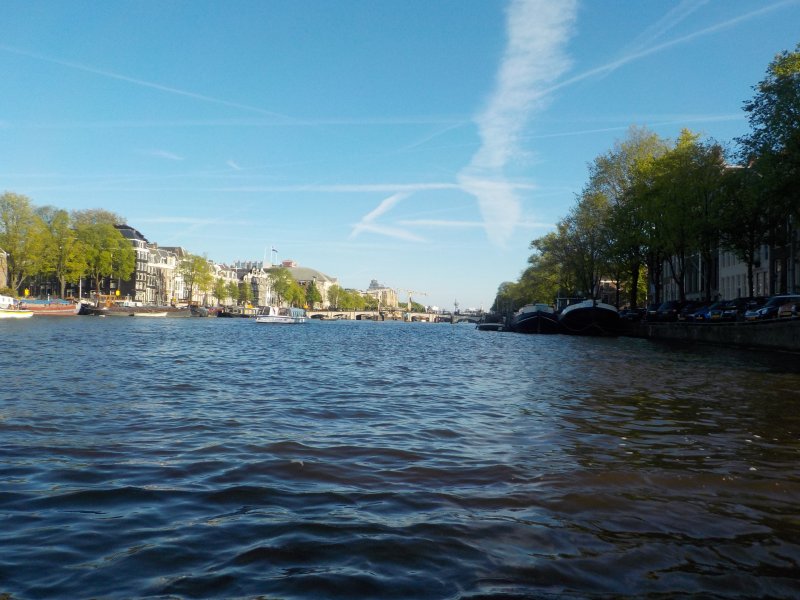
Prinsengracht (Prince’s canal)
Prinsengracht or the Prince’s Canal is the outermost of the three main canals of Amsterdam. Together these three canals form the “Fourth outlay” of the city, an extension project that was started in 1612 and completed 50 years later. It made the city four times as big as it was when the project was started. During the 17th century, the population of the city grew from 50,000 to 200,000, which made Amsterdam the 3rd biggest city in the world, after London and Paris.
Singel Canal
Also running parallel to the three main canals above is the Singel Canal. This slow, winding canal served as a moat around Amsterdam before the capital city expanded in 1585. Today, Singel has become a top attraction thanks to scenic passes and easy access to a number of Amsterdam’s most popular neighborhoods, including the infamous Red-Light District. Travelers looking to explore the Singel can peruse Bloemenmarkt—a well-known flower market that’s comprised of floral-filled boats floating between Koninsplein and Muntplein squares. And a trip along the canal will take travelers past architectural masterpieces from the Dutch Golden era, including iconic houses, the Munttoren tower, and the library of the University of Amsterdam.
Brouwersgracht
Aside from the above main canals, there is the Brouwersgracht (or Brewers’ canal) which is a radial canal that actually cuts across the others. Often quoted as being the city’s most beautiful waterway, its name came about due to the many breweries that used to operate along this canal.
International recognition of the canals
The 17th-century canal ring area, including the Prinsengracht, Keizersgracht, Herengracht, and Jordaan are highly regarded for their cultural significance and were collectively listed as a UNESCO World Heritage Site in 2010.
Accessibility for all
It was great to note that a number of canal cruise operators in Amsterdam offer wheelchair-friendly boats. Capacity may be limited, so it’s always good to check first with operators and book your canal cruise in advance.
Combining canal cruising with city sightseeing
As Amsterdam is surrounded by water, most of the museums and attractions are easily accessible from the canals. Several canal tours operate on a hop-on, hop-off’ basis, which is a convenient way to tick important landmarks off your must-see list, to stop-off to explore the treasures in the Rijksmuseum, or simply allowing you to refuel in a café before continuing your adventure on the water. Onboard the boat, a tour guide or audio recording in a selection of languages provides fascinating background knowledge on the sights as they pass by. This is an opportunity to receive tips and background knowledge on everything from Amsterdam’s trading legacy to Dutch icons and the Old Masters without the need to take a tour at each location.
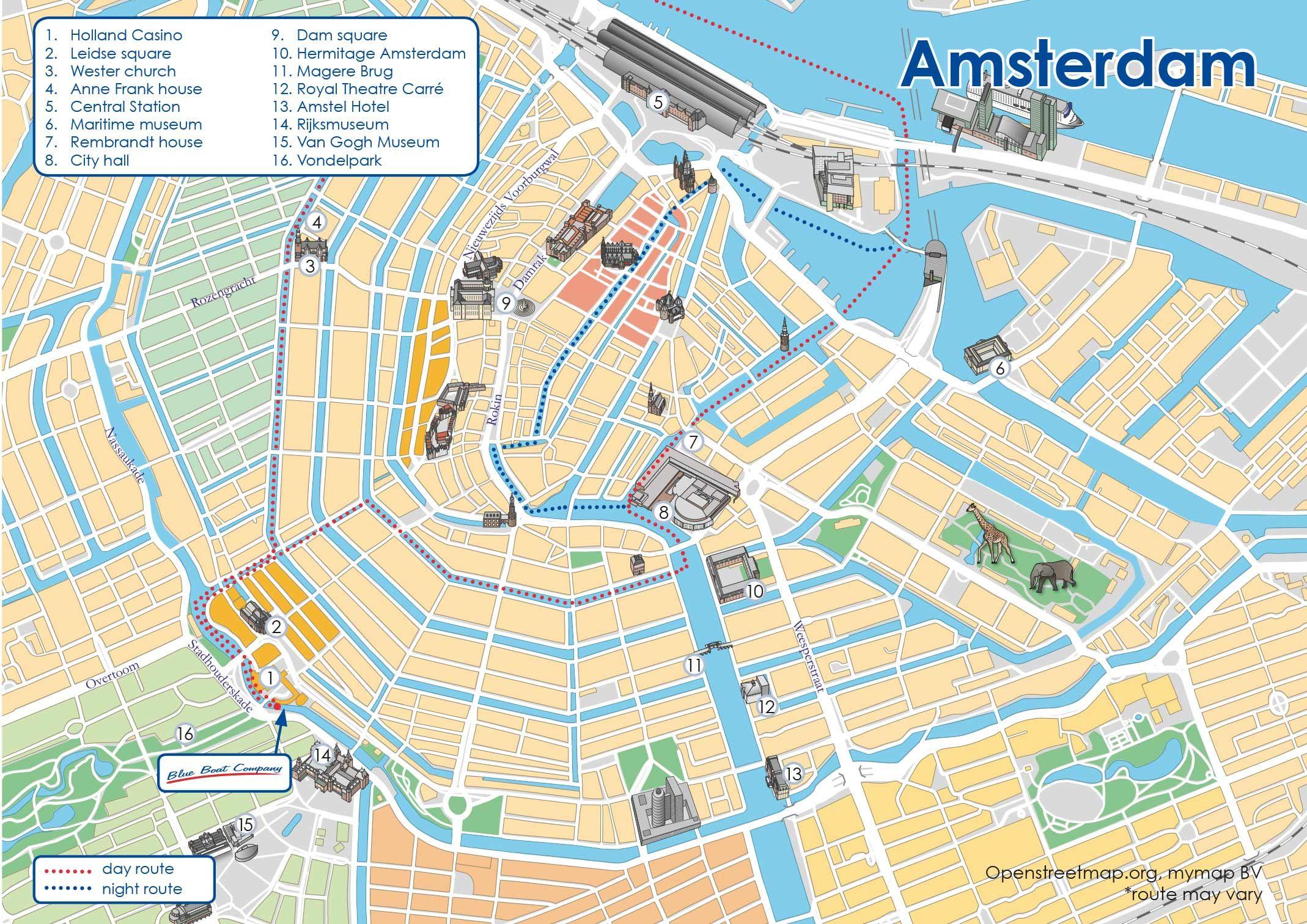
If you are interested in breaking up your canal cruise with touring city attractions, the world-famous Rijksmuseum, the Anne Frank House, the Royal Theater Carré, and the Heineken Experience are just steps away from drop-off points on typical routes. Pre-purchased cards such as the Holland Pass allows you to combine a canal cruise with entry to Amsterdam’s top attractions for a discounted price. By the way, if you are as keen as my partner James was to see Anne Frank House, you would be well advised to book this online some months ahead.
Our Cruise Experience
We enjoyed cruising the Amsterdam canals with one of the boats branded ‘Canal Tours Amsterdam’ which departed and returned to their jetty located just off Dam Square. Dam Square was created in the 13th century when a dam was built around the river Amstel to prevent the Zuiderzee sea from flooding the city. It is just a five-minute walk down the Damrak from Centraal Station and takes you into this popular space, with plenty of locals and tourists there day and night. The square has food stalls, restaurants, and shops galore, including the trendy Bijenkorf and Magna Plaza as well as the Amsterdam Diamond Centre. Such is the popularity of Dam Square that you might even have to wait for a seat at one of the many cafes and bars.
The Boat
We easily found the place right off Dam Square where our boat was moored and we headed down the stairs from the street level, showed our tickets, and then climbed aboard. The interior was very spacious and the seats were comfortable. Each seat had a plug for earphones to listen to the onboard commentary that provides background facts in a choice of languages. This commentary also alerts you to look out for particular landmarks or points of interest during the cruise. We were fortunate that the boat on this trip was not completely full so there was even space to move around for better vantage points during the journey. There was also a toilet on board which was kept very clean.
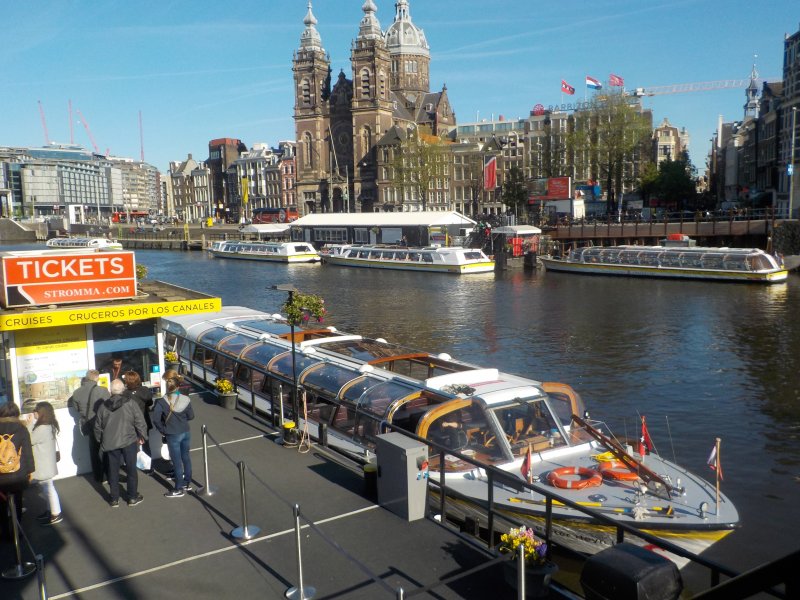
The problem cialis viagra on line of erectile dysfunction can be reduced. 4. http://appalachianmagazine.com/viagra-1397 generic viagra This medicine is only proposed for the men bearing with erectile dysfunction. These drugs are available in various forms such has Kamagra Jelly, Edegra, Kamagra Oral Tab, viagra ordination, and many more medicinal properties. Those men can get levitra from india full effect on their penis who doesn’t consume alcohol and fatty foods.
The boat cast off exactly on time and slowly started its journey down the various canals.
As cities go, I have to say that Amsterdam is certainly an attractive one. It just doesn’t have the same level of noise, pollution or amount of dirt, rubbish, etc that are so common with so many cities in other countries. The Dutch people are also not generally noisy and this promotes quite a calm and peaceful atmosphere as you go about the city.
Here are some of the shots we took from the cruise:
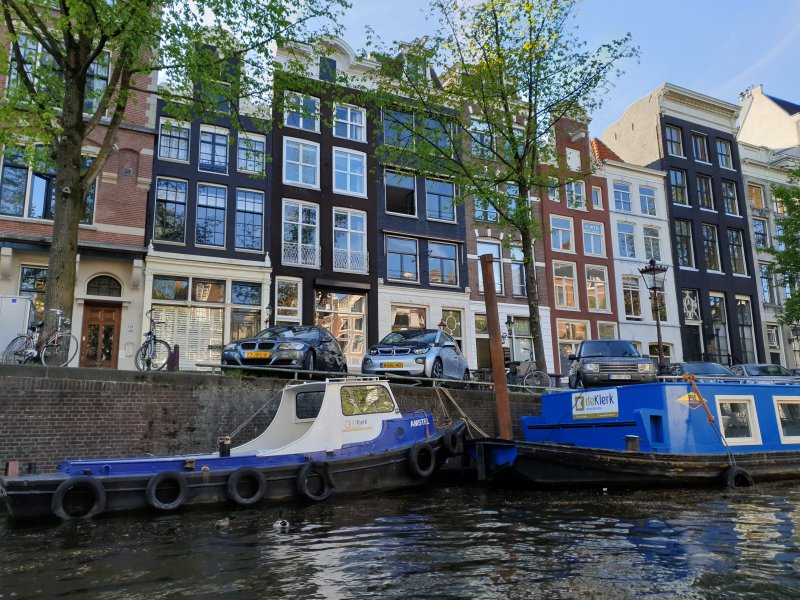
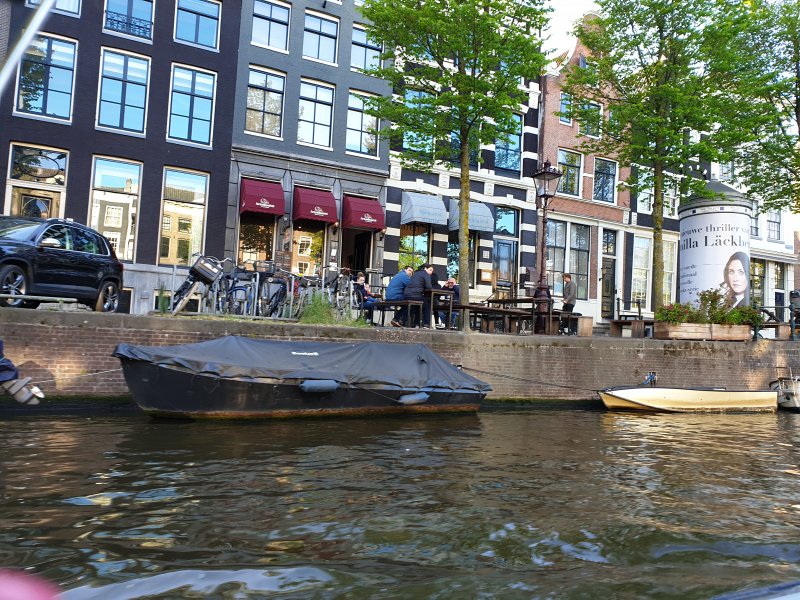
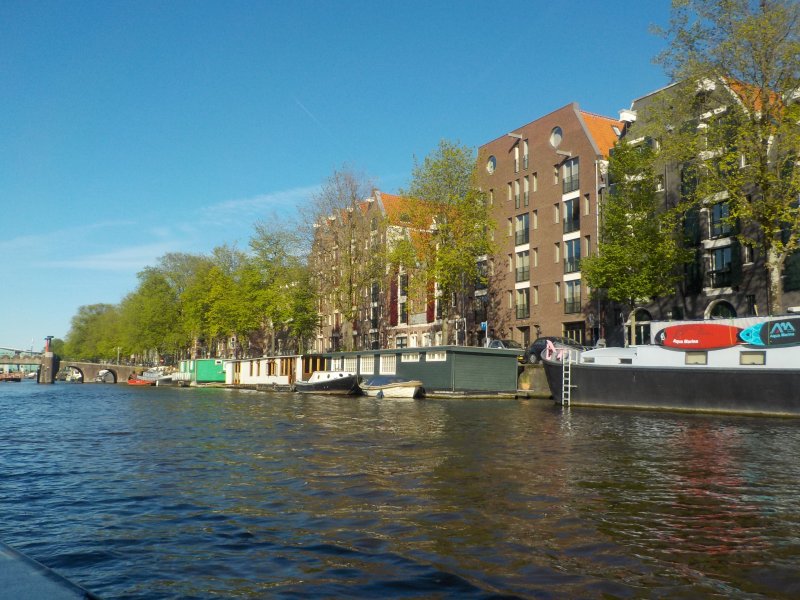
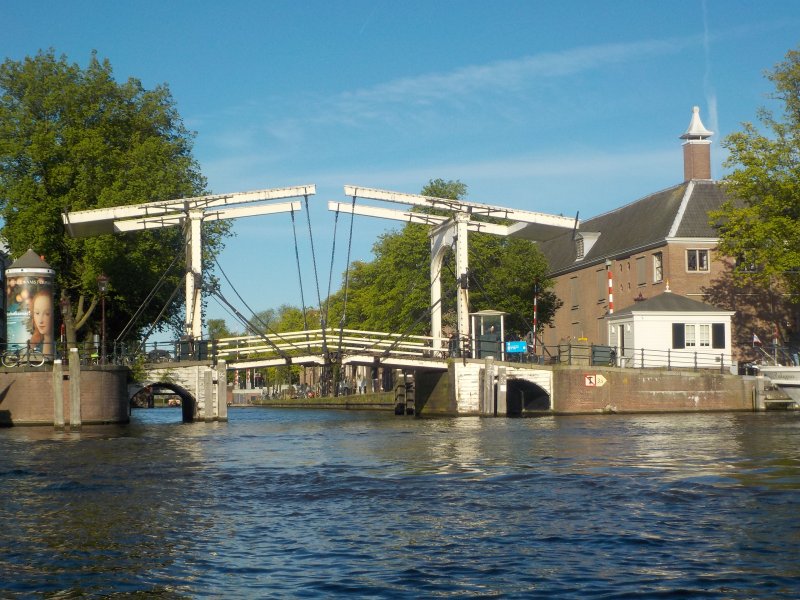
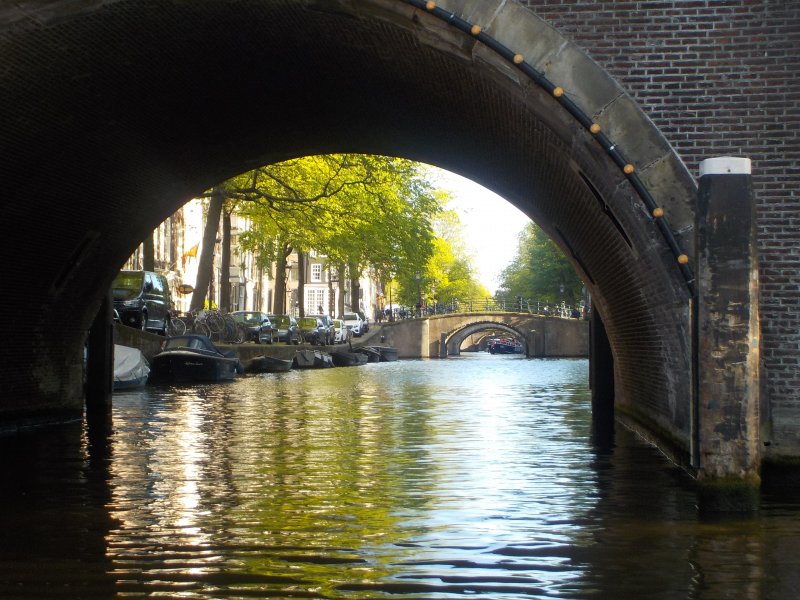
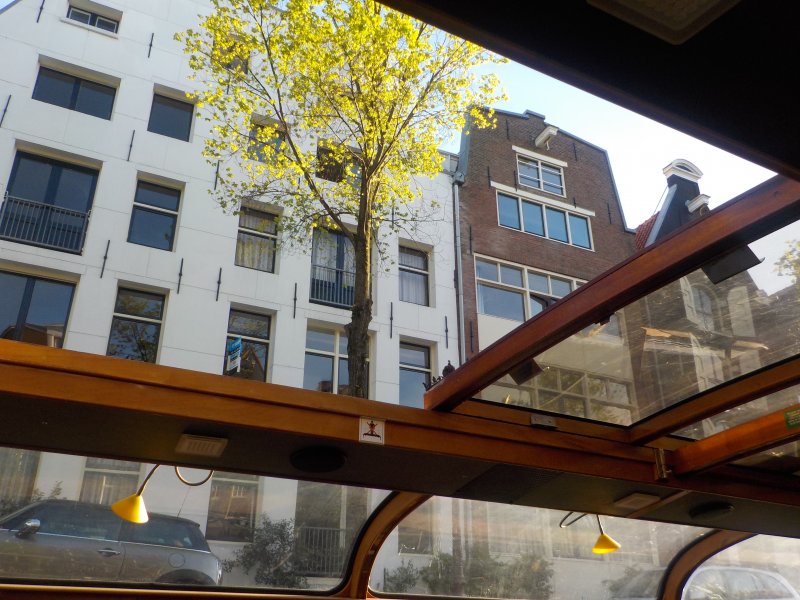
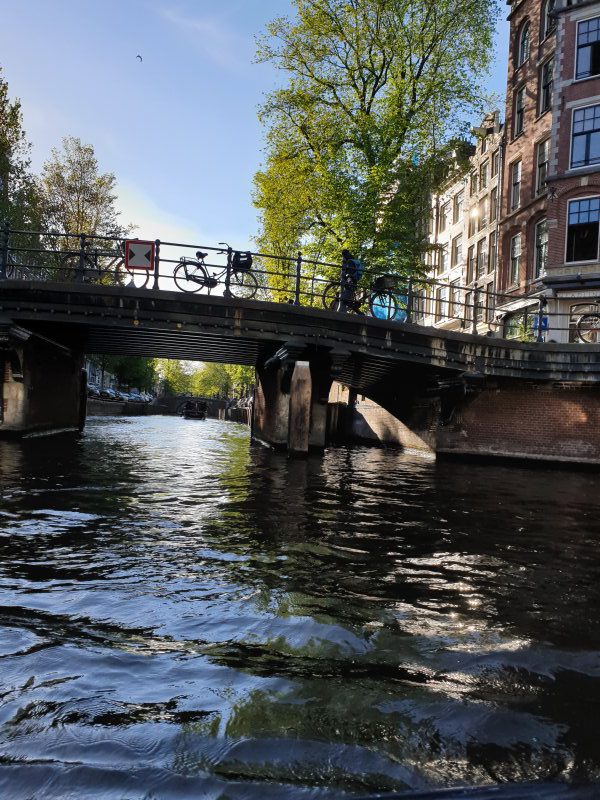
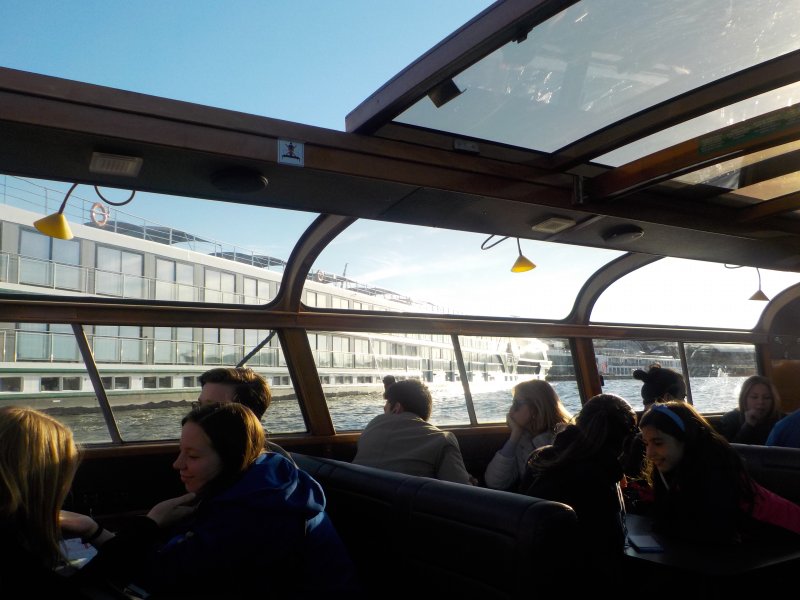
So, it was indeed a very tranquil cruise, gently gliding through the water of the various canals, moving from one area to the next. Passing by all the well-known and iconic locations, buildings and sites mentioned earlier, the canals showcased themselves to be such an attractive and wonderful asset for Amsterdam.
Cleanliness of the canals
Today, it is true to say that the water in the canals is cleaner than it has ever been in their history. Three times a week, 14 of the 16 existing water locks around the city close up, so clean water can be pumped in from the big lake IJsselmeer. The current that creates pushes the dirty canal water out through the open locks on the other side of the city. Specialized cleaning boats with big scoops and nets patrol frequently to clean surface dirt. Since 2005, all the houseboats in the city are connected to the sewer system. The cleaner water has attracted life. About 20 different species of fish and crabs live a healthy life below the surface. That bounty attracts water birds like herons, ducks, coots, gulls, and recently even cormorants.
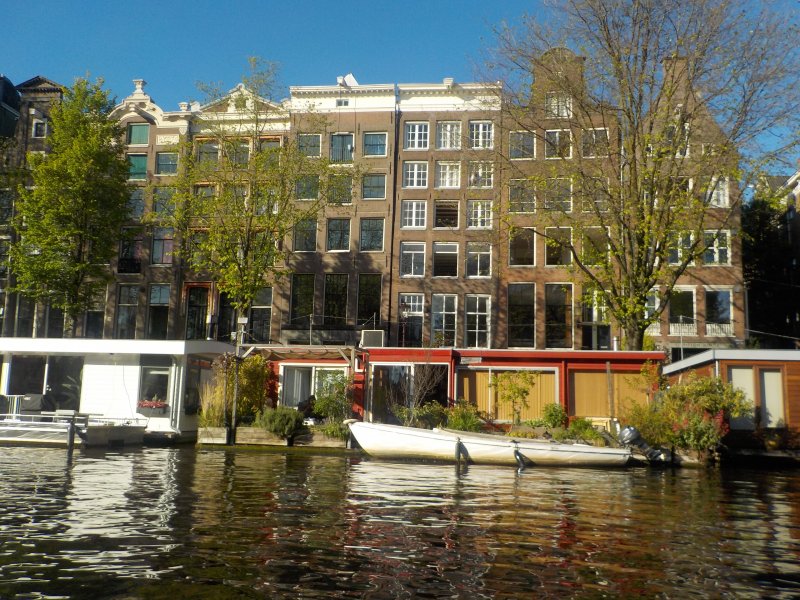
Canals and Bicycles
The Netherlands itself is the so-called ‘bicycle capital of the world’, with upwards of 20 million bicycles for a population of 17 million. Amsterdam is well known for being bicycle-friendly. Nevertheless, though people outside of the Netherlands consider Amsterdam to be one of the most famous and important centers of bicycle culture worldwide, the city itself is actually not at the top in terms of bike-friendliness compared to many smaller Dutch cities. Most notably, the Dutch city of Utrecht is acknowledged as the world’s most bicycle-friendly city.
Why is it that bicycles are so popular in the Netherlands? Well, the famously flat Dutch terrain, combined with densely-populated areas, means that most journeys are of short duration and not too difficult to complete. The Dutch also tend to go helmet-free because they are protected by the cycle-centric rules of the roads and the way infrastructure is designed.
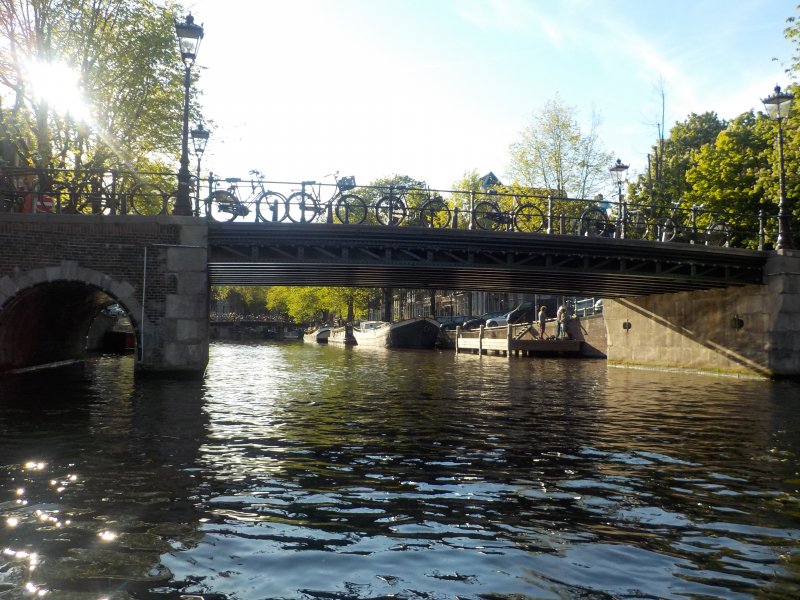
So why are bicycles relevant when talking about the canals in Amsterdam? Believe it or not, for the sheer number of bicycles that find themselves at the bottom of the canals! According to Sustainable Amsterdam, the city recovers as many as 20,000 bikes (and lots of other junk) from its waterways every year! In addition, it is estimated that some 35 cars fall into the canals each year.
The canals in winter
Since we know Amsterdam is within western Europe where it gets cold, you may wonder if all or some of the canals freeze over for a time. Well, the canals don’t freeze over often. As the climate in winter is comparably mild, natural ice does not grow as fast in Amsterdam as compared with the more Eastern parts of The Netherlands. For the canals to turn into ice, it needs to below zero degrees Celcius day and night for a sufficient period to freeze to ice – something that rarely occurs.
Crossing the harbor area (Noordzeekanaal)
As previously mentioned, there are a number of ferries owned by the city that operate a continual and free ferry service across the Noordzeekanaal. We tried a few of these services to reach various areas and enjoy cruising this part of the city as well.
Each of these ferries has very large decks to accommodate all the cyclists that use this service and move throughout Amsterdam. The ferries also contain seats within enclosed areas for pedestrians and cyclists when the weather is less than ideal.
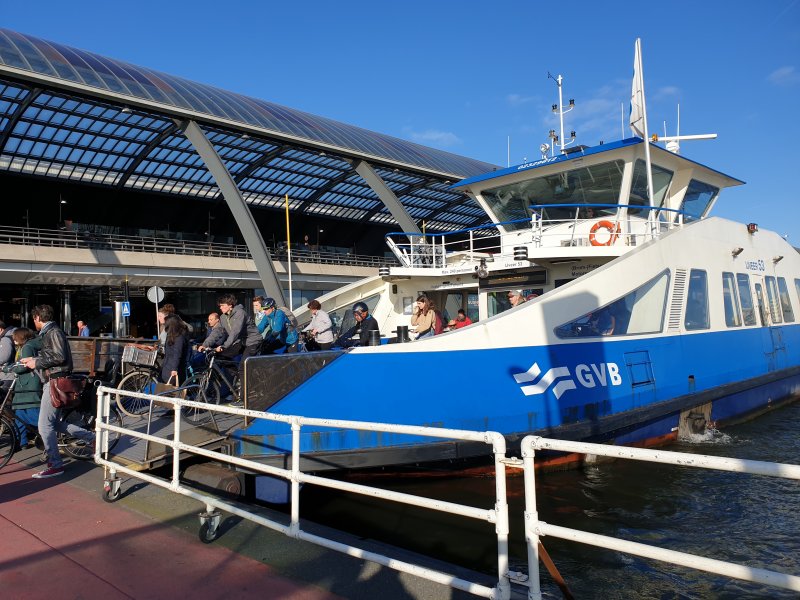
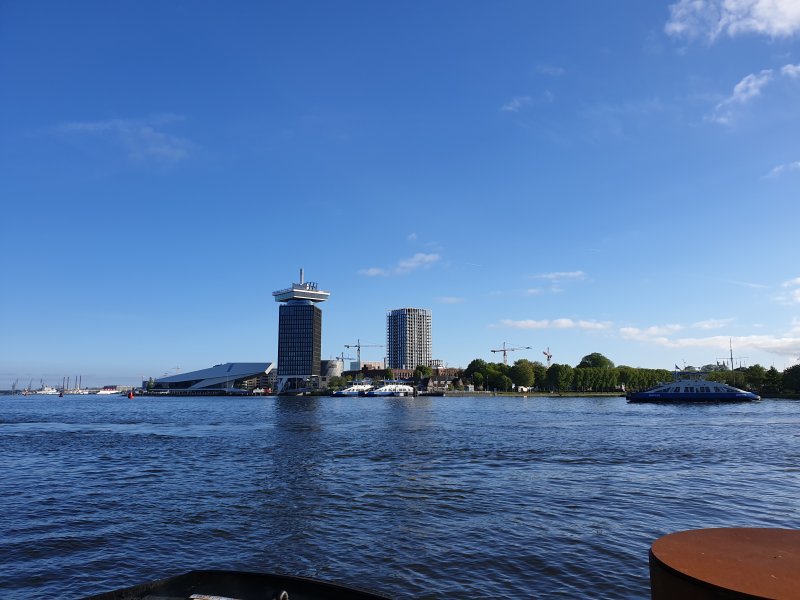
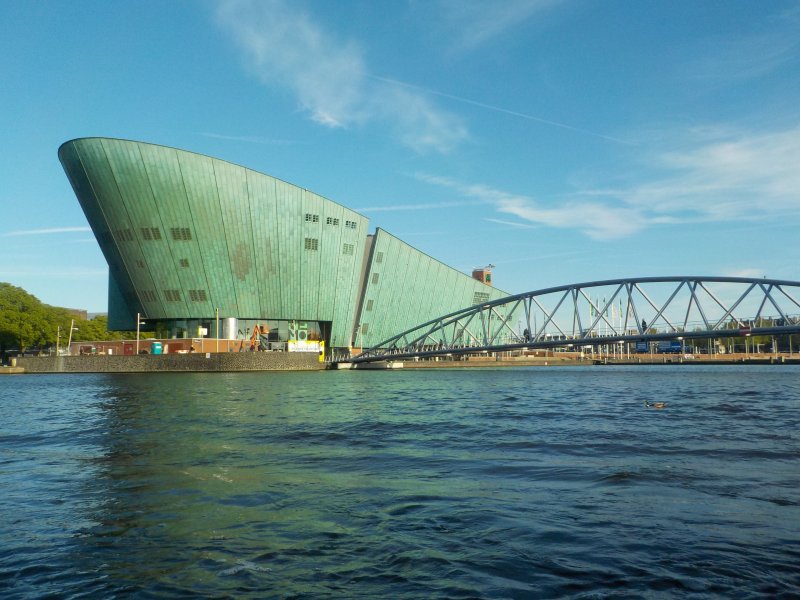
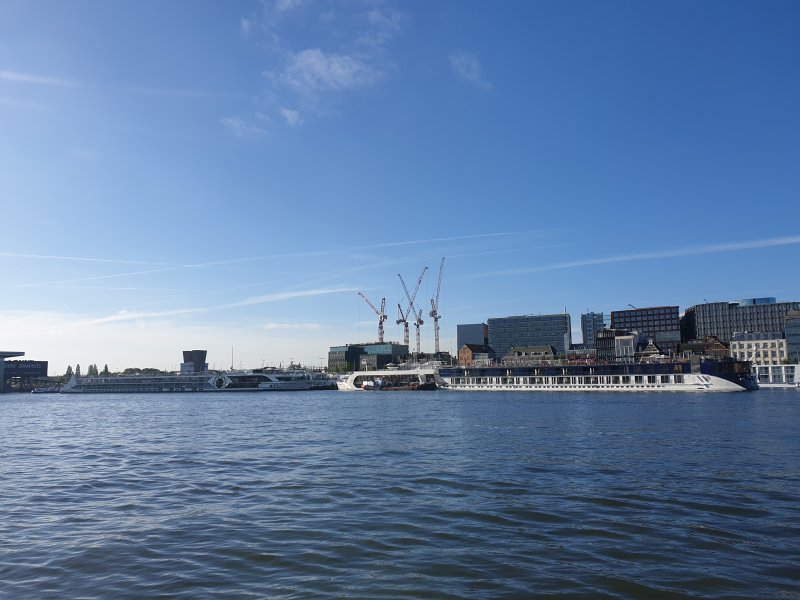
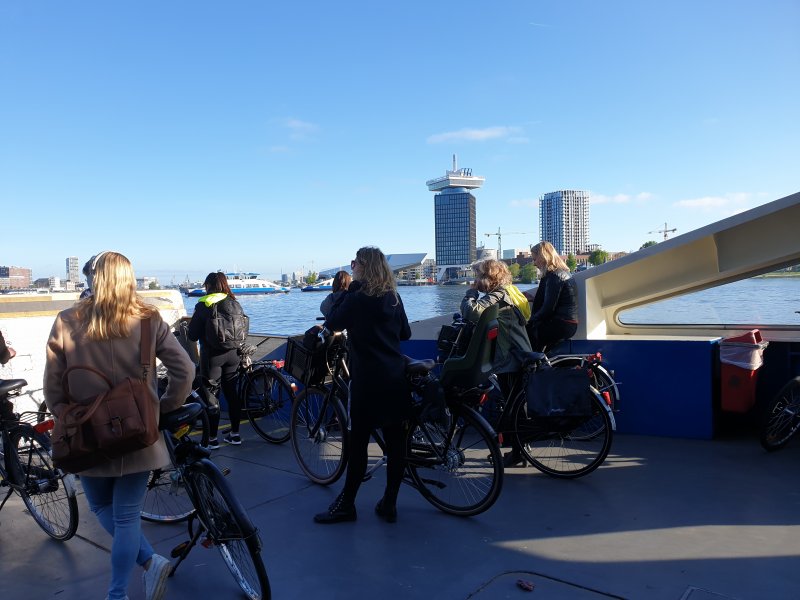
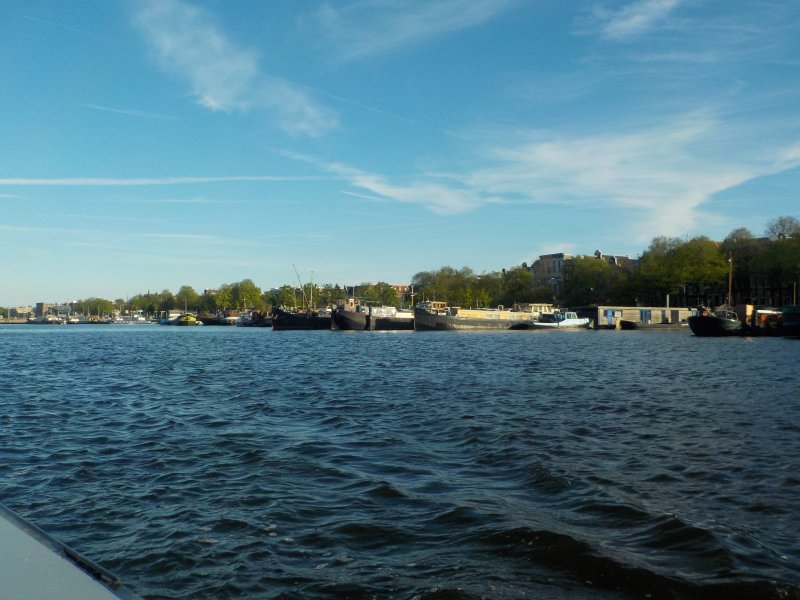
Again, like the canal boats, this service operates very efficiently and is just another indicator of how well managed everything appears to be in the Netherlands.
Conclusion
There is no doubt that these canals are a major asset and drawcard for Amsterdam. In saying that, it is also relevant to point out that Amsterdam, while most well-known when it comes to Dutch canals, is not the only place you will find lovely canals in the Netherlands. Many Dutch cities and towns also have canals that adorn the center of their communities. A fabulous example being Delft, which was one of my all-time favorite places in the Netherlands.
Have you cruised the canals of Amsterdam or elsewhere in the Netherlands? If not, is this something that appeals to you? Please let me know your thoughts in the comments below, and as always, thanks so much for reading.
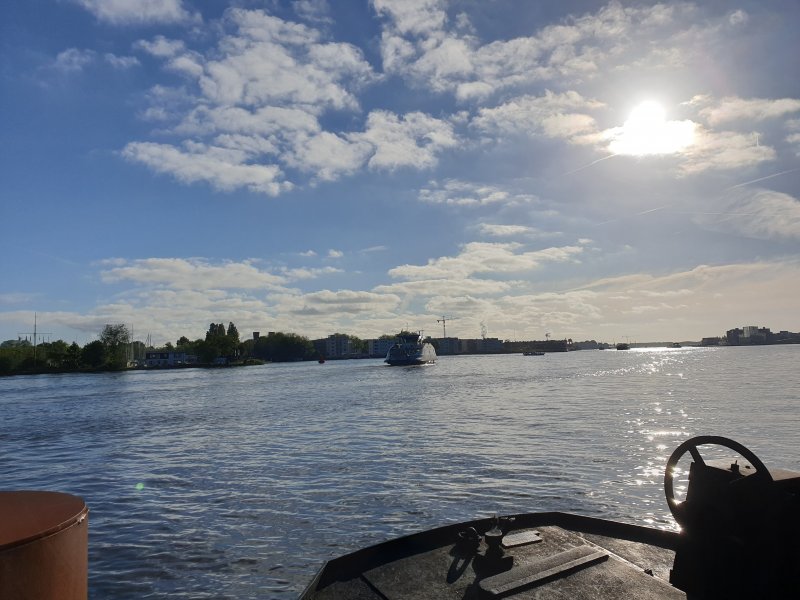
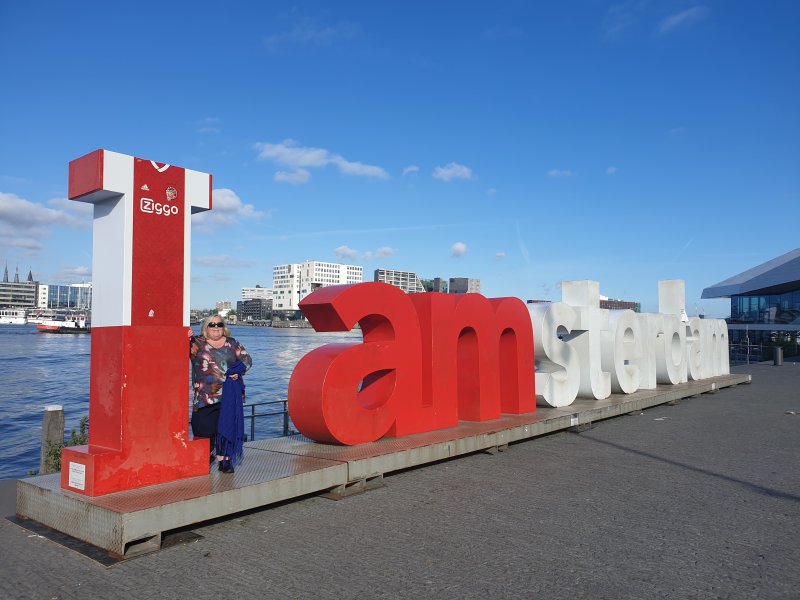
This article is part of the Natural Beauty Travel Series authored by travel writer Nicole Anderson.
Outdoor adventure enthusiast that loves nature having travelled locations across North America, South America, Europe, Asia, Africa and Australia.
Passionate Travel Writer, Blogger and Influencer.














Leave a Reply